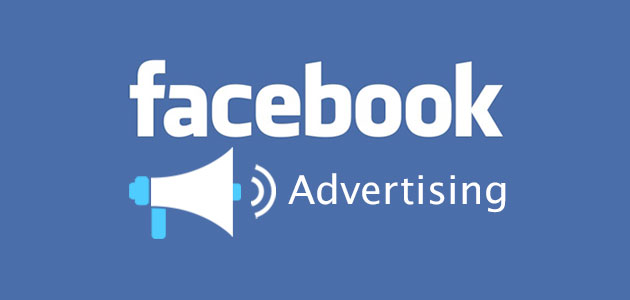In the era of rapidly progressing technology and the accessibility of the internet, communications all around the world are proliferating.
With a massive chunk of people using online social media platforms like Facebook, it has become crucial for businesses to enter the domain of online marketing to stay afloat in the ever-growing competition.
However, without the right knowledge and strategies, online marketing can often be quite challenging and less yielding if not tapped into its full potential.
Facebook Advertising Strategies
Facebook is a vast domain, and hence, getting the most out of it in terms of advertising your business requires some strategies and critical aspects to be implemented.
Here are mentioned some crucial tips to help you achieve the desired results in terms of advertising online on Facebook –
-
Select your objective
Your first step is to log into Facebook Ads Manager and click on the ‘Campaigns’ tab, then select ‘Create’ to start a new Facebook ad campaign.
Facebook provides users with 11 marketing objectives as per the ad that you want to publish online. They fit in with businesses as follows –
- Brand awareness – Reach out to a newer audience with your brand.
- Outreach – Make sure your ad reaches as many people as viable.
- Traffic – Divert traffic to a targeted web-page, app, or Facebook Messenger conversation.
- Engagement – Approach a broad audience to increase post engagements or Likes, create more attendance at your event, or drive them towards a particular offer.
- App installs – Devise innovative ways to inspire people to download your app.
- Video viewing – Get more and more people to view your brand’s videos.
- Lead generation – Gather newer prospects into your sales funnel.
- Messages – Motivate people to get in touch with your business through Facebook Messenger.
- Conversion rate – Create a compelling Call-to-action like subscribing to your website or purchasing a product using your app or Facebook Messenger.
- Catalog sales – Link your Facebook ads to your product catalog to display advertisements of products in which the people would be interested.
- Store traffic – Drive neighboring customers to brick-and-mortar stores.
Based on the ad that you want to create, you can choose from the above objectives. This would help you achieve your goal without hassle.
-
Name your Ad Campaign
Scroll down further to name your Facebook ad campaign and choose if you wish to set up an A/B split test.
There would also be an option to choose whether to turn on budget optimization. You can mark this option if you use multiple ad sets.
For the Engagements objective, you can decide if you want to emphasize on post engagement, page likes, or event responses.
-
Configure your Ad Account
In case you are new to Facebook advertising, you would come across a button that says ‘Set Up Ad Account.’
Click that button, and you would be requested to enter some essential details to finish setting up your ad account.
You need to be careful while making the choices because if you cannot change them later and to do so, you would have to create a new ad account.
-
Audience Targeting
After finalizing your Facebook ad campaign name, you would be asked to choose which page to promote. Scroll down further to build the target audience for your ads.
The first option would be to add a custom audience who have already interacted with your business in the past.
While setting up your preferred audience to target, you need to choose your targeted location wisely, depending on where you can have a maximum conversion rate towards your brand.
It would help if you also keep an eye on the audience size indicator to have a sense of the potency of your ad outreach.
By using Facebook Ads Manager, you can effectively target the right audience.
You have two fields to specify the targeted audience –
Detailed targeting – This field is used to include or exclude people based on demographics, interests, and behaviors.
You can be picky within a domain itself, and thus, targeting your audience can be severely limited.
Connections – Specifically targeting people with an existing link to your Facebook Page, app, or an event is a decent idea to be considered.
While setting up your page, if you intend to approach a new audience, you would select “Exclude people who like your Page.”
If you wish to promote an offer or a new commodity to existing fans, choose “People who like your Page” so that it reaches to people already familiar with your brand.
- Select your Facebook Ad Placements
After successfully selecting your audience, it’s time to choose where your ads would appear. The easiest way to do this on Facebook is by using ‘Automatic Placements.’
When you select ‘Automatic Placements,’ Facebook automatically places your ads across Facebook, Instagram, Messenger, as-well-as the Audience Network.
InVideo is a video creation platform that helps serve publishers, media companies, and brands to expand audience engagement through the power of video content.
InVideo serves as a free intro maker no watermark to help you render exceptional video content for your ad campaign.
-
Establish a Budget and Schedule
After ensuring the above steps, you must now decide the amount of capital you are willing to put up for your ad campaign.
You can either choose a daily or lifetime budget, then select the start and end dates if you decide to schedule your ad in the future or decide to make it live at that moment.
You also get the option to add in an optional cost and bid controls to help cap the amounts per action and not for your overall campaign.
Using the advanced budget options on Facebook, you get tons of options to select how you manage your budget in your campaign.
Running your Facebook paid ads on a schedule could be the most efficient way to regulate your expenditure on the campaign.
Running ads on a schedule allows you to serve your ad around when your targeted audience would be hitting Facebook often.
-
Create a Catchy Ad
Your first step should be to choose your ad format, choose a suitable template, write some text, and add media components for your ad.
The formats would vary based on the campaign objective you choose at the beginning of your ad campaign generation.
You can include eye-popping animations, cliparts, sound-effects, and vibrant visuals to sparkle up your ad.
You can choose from a wide range of facebook ad templates for marketing using InVideo to help you get started with the ad designing process.
Final Words
Creating a powerful ad campaign on social media platforms like Facebook is not a daunting task if you follow the strategies mentioned above.
It would be best if you ensure a successful implementation of all these tips alongside a catchy ad that employs a vibrant template and a decent soundtrack to rejuvenate it wholly.
It is also essential that you choose a decent video editing software to create your ads and publish them online to achieve optimal results.
Related Posts





![What happens online in 60 seconds? [Infographic]](https://www.worthview.com/wp-content/uploads/2013/08/Qmee-Online-In-60-Seconds2-150x150.png?x35250)






